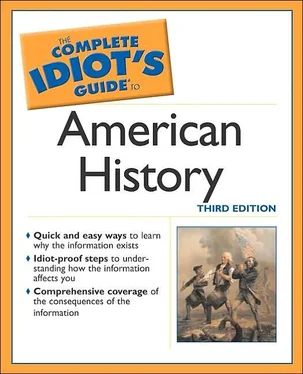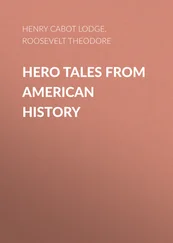Johann Augustus Sutter had bad luck with money. Born in Kandern, Germany, in 1803, he went bankrupt there and, to escape his many creditors, fled to the Mexican Southwest, where he tried his fortune in the Santa Fe trade. Twice more Sutter went bust, before finally settling in Mexican California in 1838, where he managed to build a vast ranch in the region’s central valley.
Presumably, January 24, 1848, started like any other day on the ranch. James Wilson Marshall, an employee of Sutter’s, went out to inspect the race of a new mill on the property. He was attracted by something shiny in the sediment collected at the bottom of the mill race. It was gold.
Within a month and a half of the discovery, all of Sutter’s employees had deserted him, in search of gold. Without a staff, Sutter’s ranch faltered. Worse, his claims to the land around the mill were ultimately judged invalid. While everyone around Sutter (it seemed) grew instantly rich, Sutter himself was, yet again, financially ruined and would die, bitter and bankrupt, in 1880.
It was not Marshall or Sutter, but a Mormon entrepreneur who did the most to stir up the great Gold Rush of 1849. Sam Brannon was one of a very few Mormon men brash enough to challenge the authority of Brigham Young. In defiance of Young, Brannon had set up his own Mormon community in the vicinity of San Francisco—then called Yerba Buena (good herb). Brannon saw in the discovery of gold a chance to profit from serving the needs of hopeful prospectors and other settlers. Fresh from a trip to Salt Lake City, where Young had excommunicated him from the church, Brannon took a quinine bottle, filled it with gold dust, and ran out into the streets of his town. “Gold!” he yelled. “Gold! Gold from the American River!” For good measure, he covered the gold story in The California Star, a newspaper he owned. Within two weeks, the population of Yerba Buena plummeted from a few thousand to a few dozen, as men dropped their tools and left their jobs to prospect on the south fork of the American River.
From the West Coast, word of gold spread east. The scene played out in San Francisco was repeated in city after city. Employment was unceremoniously terminated, wives and children were left behind, and seekers set out on the long trek to California. The journey was characteristically filled with hardship and heartbreak, whether the traveler chose the tedious overland route, the treacherous sea passage around stormy Cape Horn, or the boat to Panama (and a trek across the disease-ridden Isthmus to meet another ship for the voyage to the California coast). For some, the trip was worthwhile; great fortunes were made. Most prospectors, however, found only hard lives, mean spirits, and barely enough gold to pay for meals, shelter, and clothing. Many didn’t even find that much.
The fact was that most men made the mistake of looking for their fortune on the ground, while the real money was made by those, like Brannon, who sold groceries, hardware, real estate, liquor, and other necessities to the ’49ers. Collis Huntington and Mark Hopkins made a fortune in miner’s supplies. Charles Crocker used the profits from his dry goods operation to start a bank. Leland Stanford parlayed his mercantile pursuits into a political career culminating in the governorship of California and the founding of the university that bears his name. Together—as the “Big Four”—Huntington, Hopkins, Crocker, and Stanford provided the major financing for the Central Pacific Railroad—the western leg of the great transcontinental railroad completed in 1869.
The California Gold Rush lasted through the eve of the Civil War. The rush populated much of California, and then, as gold was discovered farther inland in Nevada, Colorado, and the Dakotas, yet more of the frontier West was settled. But as the bonds of union grew stronger between East and West, those uniting North and South steadily dissolved. Still basking in the reflected glory of western gold, the American nation was about to enter its darkest hours.
The Least You Need to Know
While controversial, the war with Mexico greatly expanded the western territory of the United States.
In addition to agriculture, the promise of religious freedom and the promise of gold lured many thousands out west in the years between the Mexican War and the Civil War.
The Norman Trek was accomplished with great efficiency and very little loss of life. The church established a Perpetual Emigrating Fund to lend money to those lacking the means to finance their own way west. By 1855, the church realized that outfitting fully equipped wagon trains would soon break the fund. Brigham Young hit on a solution. He directed Mormon carpenters in Iowa to build handcarts as cheap substitutes for the horse-drawn prairie schooners. The emigrants would walk to Salt Lake City.
The small, boxlike carts looked like miniature covered wagons. They were equipped with only two oversize wheels, designed to roll easily over rough terrain. Approximately 500 handcart “Saints” left Iowa City on June 9 and 11, 1856. Although the trek took longer than anticipated (the emigrants did not arrive in Salt Lake City until late in September), the emigrants arrived safely, and Young was encouraged.
Departure of the next two “Handcart Brigades” was delayed until July and August because of a shortage of carts. Faced with a scarcity of seasoned lumber, the carpenters had to use green wood, which shrunk in the hot, and air of the plains. Filled to overflowing, the carts broke down or simply fell apart, supplies ran short, and, worse still, the delayed departure from Iowa put the emigrants in Wyoming during the first snows. Of the 1,000 emigrants in the second Handcart Brigade, 225 died.
People who participated in the great California Gold Rush of 1849 earned the name ’49er or Forty-niner . The 1849 rush was not the country’s first, however; nor would it be the last. Western Georgia was the scene of the first rush would occur elsewhere in California and throughout the West during much of the 19th century. In 1896, the Klondike drew thousands of prospectors, and two years later, more came to Alaska in search of the yellow ore.
Strange Flag over Sumter
(1859-1862)
In This Chapter
Lincoln’s rise
John Brown’s raid on Harpers Ferry
The fall of Fort Sumter and the early battles
Union military failures
Antietam and the Emancipation Proclamation
Abraham Lincoln was born on February 12, 1809, in a log cabin in Hardin (now Larue) County, Kentucky. In 1816, the family moved to Indiana and, finally, to Illinois in 1830. Largely self-taught, Lincoln tried various occupations and served as a militiaman in the Black Hawk War (1832). Although he had little appetite for military life, Lincoln took “much satisfaction” in having been elected captain of his militia company. That position opened new horizons for the young backwoodsman. Lincoln ran for the Illinois state legislature, losing his first bid but subsequently gaining election to four consecutive terms (1832-41). After setting up a successful law practice in Springfield, the state capital, he served a term (1847-49) in the U.S. House of Representatives but then returned to his law practice.
At this point, by his own admission, Lincoln “was losing interest in politics.” Then came the Kansas-Nebraska Act in 1854. Its doctrine of popular sovereignty potentially opened new territories to slavery, and Lincoln saw the provisions of the act as immoral. Although he believed that the Constitution protected slavery in states where it already existed, he also thought that the Founding Fathers had put slavery on the way to extinction by legislating against its spread to new territories. Lincoln ran unsuccessfully for the U.S. Senate in 1855, then, the following year, left the Whig party to join the newly formed Republicans.
Читать дальше












